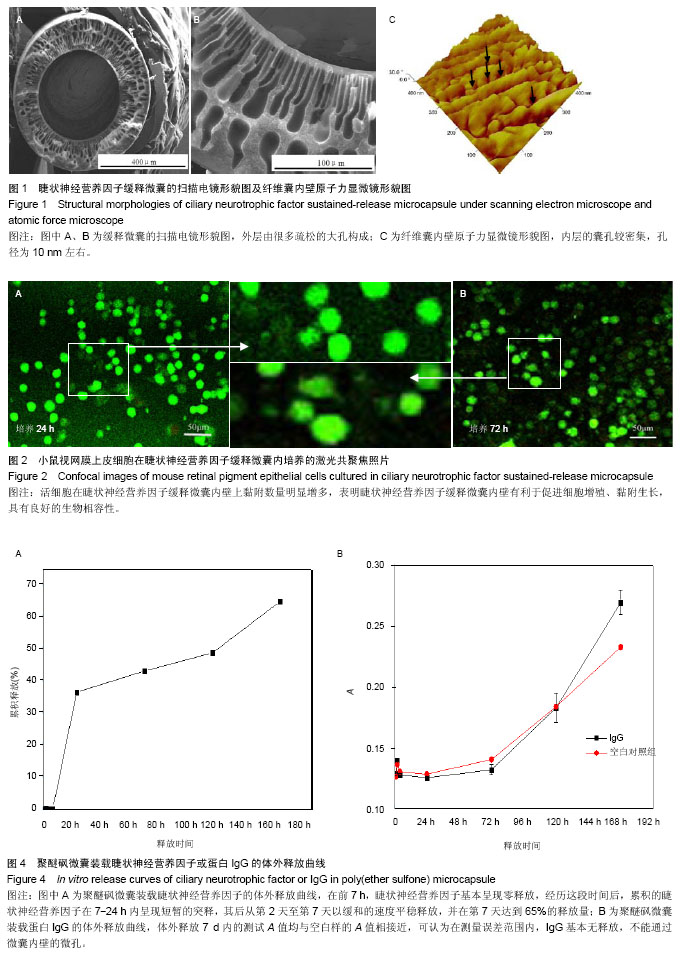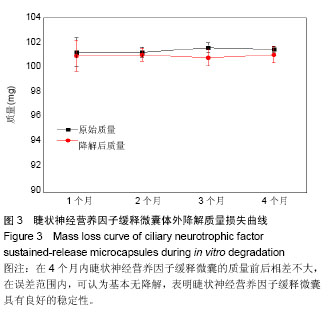| [1] Tao W.Application of encapsulated cell technology for retinal degenerative diseases.Expert Opin Biol Ther.2006;6(7): 717-726.
[2] Vervoort R,Wright AF.Mutations of RPGR in X-linked Retinitis Pigmentosa (RP3).Hum Mutat.2002;19:486-500.
[3] 董晓,佘华宁.视网膜色素变性疾病治疗进展及研究现状[J].国际眼科杂志,2011,11(4):633-636.
[4] 艾明,孙明,李岱.视网膜色素变性的治疗进展[J].国际眼科杂志, 2010,10(7):1324-1326.
[5] 蒋沁,曹国凡,胡红莉.视网膜色素变性的研究进展[J].眼视光学杂志,2006,8(2):126-130.
[6] Bustos M,Moreno-Aliaga MJ,Prieto J.Cardiotrophin-1: a new player in energy metabolism with potential therapeutic application. Aging (AlbanyNY).2011;3(8):698-699.
[7] Sale A,Roy Chowdhury SK,Smith DR,et al.Ciliary neurotrophic factor activates NF-κB to enhance mitochondrial bioenergetics and prevent neuropathy in sensory neurons of streptozotocin-induced diabetic rodents. Neuropharmacology. 2013;65:65-73.
[8] Sleeman MW,Anderson KD,Lambert PD,et al.The ciliary neurotrophic factor and its receptor, CNTFR alpha.Pharm Acta Helv.2000;4(2-3):265-272.
[9] 李陶,陈意生,王禾.睫状神经营养因子、雪旺氏细胞与周围神经再生[J].国外医学:临床生物化学与检验学分册,2001,22(1): 25-27.
[10] Kang SS,Keasey MP,Arnold SA,et al.Endogenous CNTF mediates stroke-induced adult CNS neurogenesis in mice. Neurobiol Dis.2013;49C:68-78.
[11] Askvig JM,Leiphon LJ,Watt JA.Neuronal activity and axonal sprouting differentially regulate CNTF and CNTF receptor complex in the rat supraoptic nucleus.Exp Neurol. 2012; 233(1):243-252.
[12] Adler R,Landa KB,Manthorpe M,et al.Cholinergic neuronotrophic factors: intraocular distribution of trophic activity for ciliary neurons. Science. 1979;204(4400): 1434-1436.
[13] Barbin G,Manthorpe M,Varon S.Purification of the Chick Eye Ciliary Neuronotrophic Factor.J Neurochem.1984; 43(5): 1468-1478.
[14] Masiakowski P,Liu HX,Radziejewski C,et al.Recombinant Human and Rat Ciliary Neurotrophic Factors.J Neurochem.1991;57(3):1003-1012.
[15] Lim GJ,Zare S,Van DM,et al.Cell micro-encapsulation.Adv Exp Med Biol.2010;670:126-136.
[16] LaVail MM,Unoki K,Yasumura D,et al.Multiple growth factors, cytokines and neurotrophins rescue photoreceptors from the damaging effects of constant light. Proc Natl Acad Sci U S A.1992;89(23):11249-11253.
[17] Roger J,Brajeul V,Thomasseau S,et al.Involvement of Pleiotrophin in CNTF-mediated differentiation of the late retinal progenitor cells.Dev Biol.2006;298:527-539.
[18] LaVail MM,Yasumura D,Matthes MT,et al.Protection of mouse photoreceptors by survival factors in retinal degenerations. Invest Ophthalmol Vis Sci.1998;39(3):592-602.
[19] Gaudana, R,Jwala J,Boddu SH,et al.Recent perspectives in ocular drug delivery. Pharm Res.2009;26(5):1197-1216.
[20] Santos E,Orive G,Calvo A,et al.Optimization of 100 μm alginate-poly-L-lysine-alginate capsules for intravitreous administration. J Control Release.2012;158(3):430-450.
[21] Montanucci P,Pennoni I,Pescara T,et al.The functional performance of microencapsulated human pancreatic islet-derived pre-cursor cells. Biomaterials. 2011; 32: 9254-9262.
[22] Rokstada AMA,Lacíkb I,de Vosc P,et al.Advances in biocompatibility and physico-chemical characterization of microspheres for cell encapsulation.Adv Drug Del Rev.2014; 67-68:111-130.
[23] Mendes AC,Baran ET,Reis RL,et al.Fabrication of phospholipid–xanthan microcapsules by combining micro?uidics with self-assembly.Acta Biomaterialia.2013;9(5): 6675-6685.
[24] Wang MB,Feng QL,Niu XF,et al.A spheres-in-sphere structure for improving protein-loading poly(lactide-co-glycolide) microspheres.Polym Degrad Stabil.2010;95:6-13.
[25] Brun-Graeppi AK,Richard C,Bessodes M,et al.Cell microcarriers and microcapsules of stimuli-responsive polymers.J Control Release.2011;149(3): 209-224.
[26] Weiner AL,Gilger BC.Advancements in ocular drug delivery.Vet Ophthalmol.2010;13(6):395-406.
[27] Checa-Casalengua P,Jiang C,Bravo-Osuna I,et al.Retinal ganglion cells survival in a glaucoma model by GDNF/Vit E PLGA microspheres prepared according to a novel microencapsulation procedure.J Control Release.2011;156(1): 92-100.
[28] Murua A,Portero A,Orive G,et al.Cell microencapsulation technology: Towards clinical application.J Control Release. 2008;132(2):76-83.
[29] Brun-Graeppi AK,Richard C,Bessodes M,et al.Cell microcarriers and microcapsules of stimuli-responsive polymers. J Control Release.2011;149(3):209-224.
[30] Emerich DF,Orive G,Thanos C,et al.Encapsulated cell therapy for neurodegenerative diseases: From promise to product. Adv Drug Del Rev. 2014;67-68:131-141.
[31] Unger RE,Huang Q,Peters K,et al.Growth of human cells on polyethersulfone (PES) hollow fiber membranes.Biomaterials. 2005;26(14):1877-1884.
[32] 夏泽坤,吕晓龙.聚醚砜中空纤维膜透析性能研究[J].天津工业大学学报, 2007, 26(2):10-13.
[33] Thanos CG,Bell WJ,O'Rourke P,et al.Sustained secretion of ciliary neurotrophic factor to the vitreous, using the encapsulated cell therapy-based NT-501 intraocular device. Tissue Eng.2004;10(11-12):1617-1622. |


.jpg)